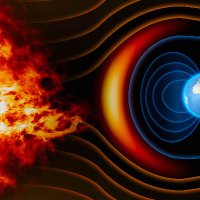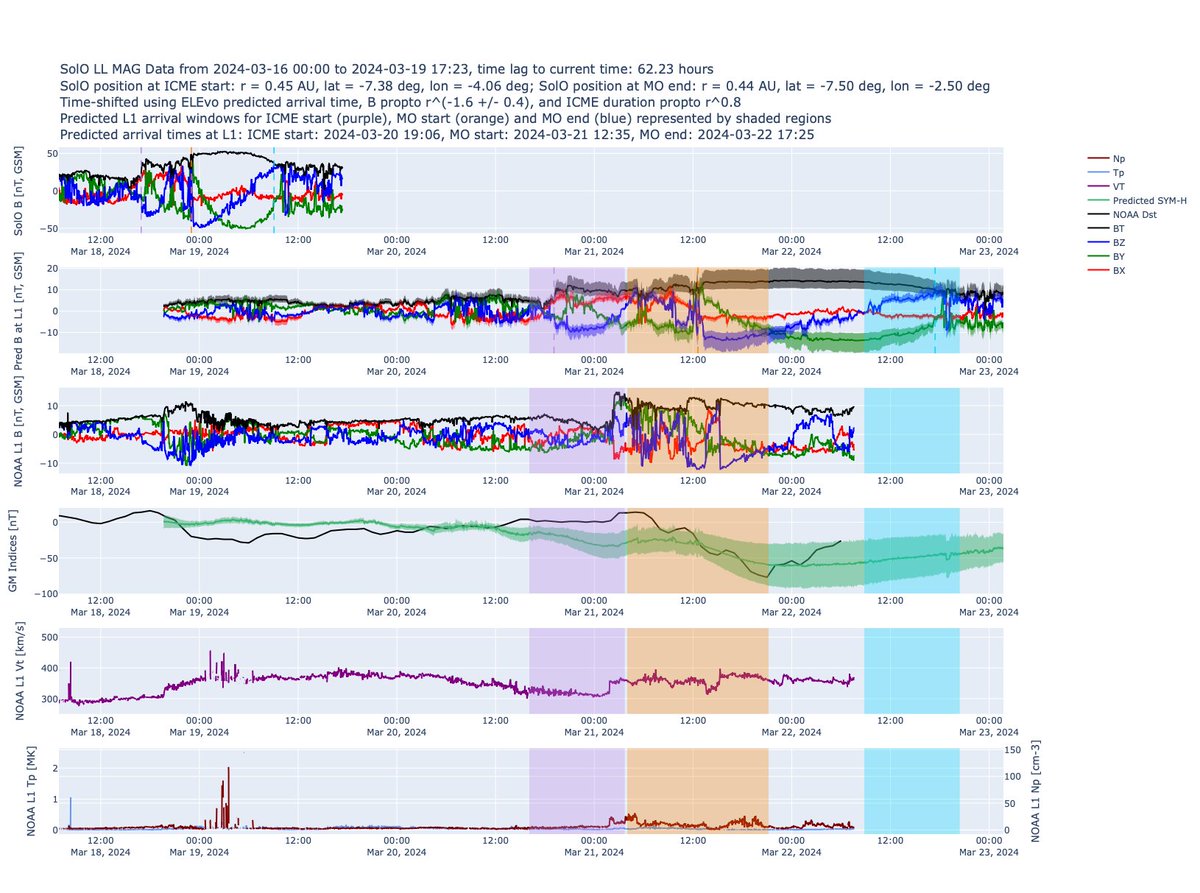
Christian Möstl
@chrisoutofspace
Head, Austrian Space Weather Office @ASWOGeoSphere | @geosphere_AT |☀️💥💨🌍 | @ERC_Research HELIO4CAST | https://t.co/gWTotqCUgo |
ID:24692611
https://orcid.org/0000-0001-6868-4152 16-03-2009 13:47:26
4,1K Tweets
3,6K Followers
999 Following


This is how our #solarstorm forecast using Solar Orbiter magnetometer data turned out so far - not bad 🙂. In panel 4, the black line is the observed Dst, the shaded region our forecast. The timing is a bit off, but: our prediction was -85 nT +/- 20 nT, the minimum Dst so far is -130 nT.👇




We are going to post updates under Austrian Space Weather Office, GeoSphere Austria for the forecast of this very fast #solarstorm . With the amazing Solar Orbiter magnetometer data, hopefully we can come up with a prediction of the geomagnetic effects.
This CME arrives at 🌍 tomorrow Sun March 24!


Here is our SOHO view of the early 2024 March 23 halo CME. The bulk of the CME goes to the north, Solar Orbiter magnetometer is at 9° west at 0.39 AU. We keep watch of these in situ observations, but given the magnitude of the event it is obvious it will be observed at ESA's Solar Orbiter.




Our team at the Austrian Space Weather Office, GeoSphere Austria is analyzing this event and we will come back soon with initial results.


Ian Urbina Shane Bauer .@KathrynSchulz delves into the nature of solar storms, and the concern some scientists have that a severe one could wreak havoc on technologies essential to our daily lives. nyer.cm/kqzbfkj

A #solarstorm erupting on Saturday 2024 Jan 20 is expected to arrive later today, Monday Jan 22. Initial speed estimates are 600-900 km/s. As of Monday Jan 22 8:50 UT, the halo CME on Jan 20 has not yet arrived at L1. Another storm erupting on the Sun on Jan 21 is more eastbound.

We have setup a new team account Austrian Space Weather Office, GeoSphere Austria where we will post updates on our research on the physics and forecasting of the solar wind and solar storms.
Real-time #aurora events in central Europe will also be made public and discussed via geosphere.at (in german).


